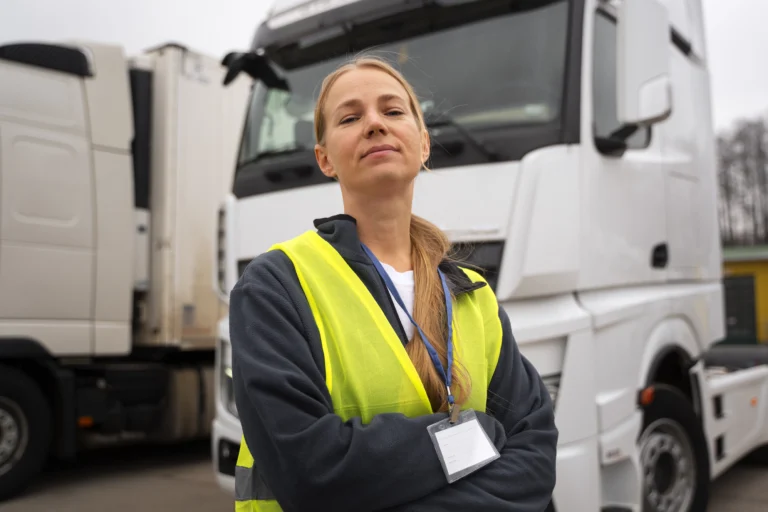International Day for the Elimination of Violence against Women is observed today, November 25.
International Day for the Elimination of Violence against Women is observed today, November 25. This commemoration marks the beginning of the 16 Days of Activism against Gender-Based Violence, a global campaign that seeks to amplify the voices of women who have experienced violence and raise awareness among the broader population about the challenges that persist today. The campaign concludes on December 10, Human Rights Day, emphasizing that women’s rights constitute a fundamental category requiring immediate attention.
This year’s theme, “UNiTE to End Digital Violence,” highlights the failures of systems meant to combat online abuse. According to UN Women, between 16% and 58% of women worldwide have experienced some form of digital violence; however, fewer than 40% of countries have laws against cyber harassment.
This issue persists across all sectors, and unfortunately, the road transport industry is no exception. The lack of safety and equity policies for women in this field remains evident, and on the International Day for the Elimination of Violence against Women, we reflect on this reality.
Main challenges for women in the transportation industry
The number of women working as truck drivers in the transportation industry has increased in recent years. According to Women in Trucking, by 2022 the percentage of women holding a Class A commercial driver’s license had risen significantly. Even so, they remain a minority in a sector historically dominated by men.
Although organizations such as Women in Trucking (WIT) provide support specifically for women in the trucking sector, working conditions still fall short of the standards required to ensure a truly safe work environment. Studies, reports, and surveys show that women in this industry face multiple challenges regarding safety and equity. The most common include:
Road safety and rest areas
Rest areas are often poorly lit or isolated, making many women feel unsafe when parking in these locations. There are high levels of harassment and gender discrimination within the industry, according to the American Transportation Research Institute (ATRI), which further increases the insecurity experienced by female drivers.
In addition to safety concerns, these spaces are not designed with women’s needs in mind: inadequate or poorly maintained showers, unsafe or dirty restrooms, and lack of privacy.
Gender stereotypes and discrimination
Women in the trucking industry often must work twice as hard to prove they are competent. Deeply rooted, and incorrect, assumptions about their ability to drive a truck limit the opportunities available to them in professional settings.
There are also barriers in training: instructors with biases, lack of patience, or programs poorly adapted to the realities faced by women. According to various reports, a significant number of women drop out during truck-driving training due to cost, lack of support, or unfavorable conditions.
Work–life balance
A truck-driving job involves long hours on the road, making it difficult to spend time with family, especially for those with children or domestic responsibilities. As a result, many women prefer regional routes or positions with less time away from home to maintain a healthier balance, since domestic responsibilities often fall disproportionately on their shoulders.
Dignified and safe spaces for women
These situations underscore the need for legislation that includes direct participation from women and is strictly enforced. Companies have the responsibility to create and guarantee safe environments for the women who work with them, as well as to eliminate any threats that increase their insecurity. Complaints must be handled consistently, seriously, and promptly, with trustworthy spaces available for women and any staff who may need them.
During the upcoming 16 Days of Activism against Gender-Based Violence, the goal is to draw global attention to this issue and provide tools that help create safe spaces for women—both online and in the real world.

Women’s safety in the transport sector: urgent priorities
International Day for the Elimination of Violence against Women is observed today, November 25. International Day for the Elimination of Violence against Women is observed

Federal CDL policies linked to thousands of lost trucking jobs
Federal government measures regarding CDLs and English-language proficiency requirements have resulted in the loss of thousands of jobs in the trucking industry. Federal government measures

Thanksgiving 2025: Weather and Road Conditions Across the U.S.
Thanksgiving 2025: What Truckers Need to Know About Weather and Road Conditions Across the U.S.

Comprehensive Guide to the New Federal Rule for Accessing CDL Licenses
The federal government has redefined who can apply for, renew, or retain a Commercial Driver’s License (CDL), introducing new restrictions for migrants and issuing direct

What drivers want: more mileage, more pay
The results of the annual Commercial Carrier Journal survey, conducted in collaboration with Netradyne, “What Drivers Want,” have now been published. The results of the

U.S. Unveils 1st Female Crash-Test Dummy, Sparking Debate: Are Accidents Different for Men and Women?
The new THOR-05F marks a milestone: for the first time, a crash-test dummy accurately reflects the female anatomy. Officials argue that decades of safety testing based on male-bodied models left women more vulnerable to severe injuries. The announcement aligns with the administration’s broader push to reintroduce biological sex classifications in medical and safety policy.


